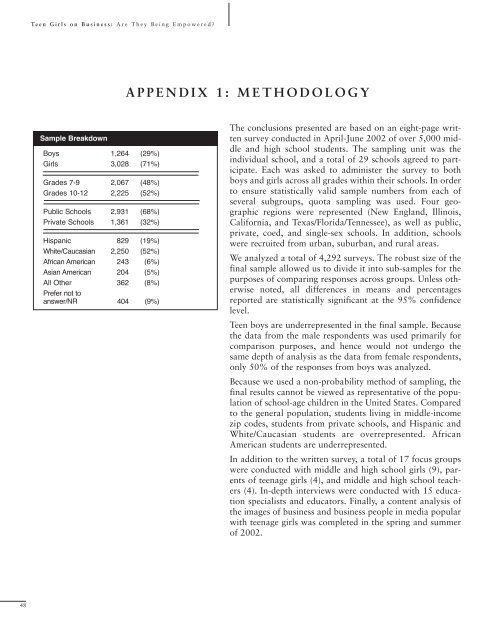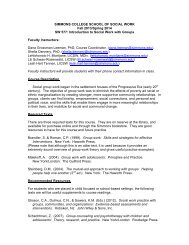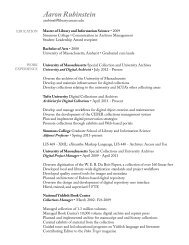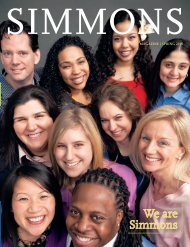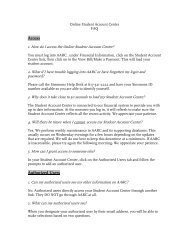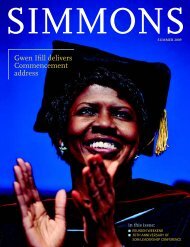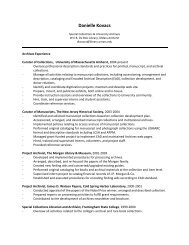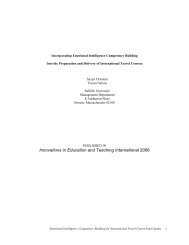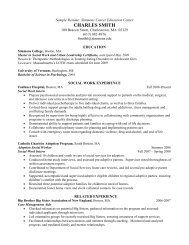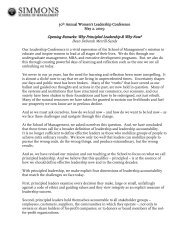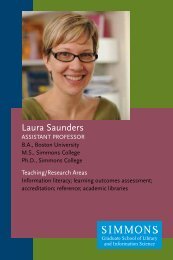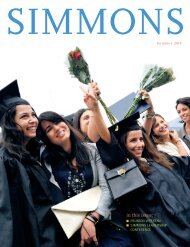Teen Girls on Business - Simmons College
Teen Girls on Business - Simmons College
Teen Girls on Business - Simmons College
You also want an ePaper? Increase the reach of your titles
YUMPU automatically turns print PDFs into web optimized ePapers that Google loves.
<str<strong>on</strong>g>Teen</str<strong>on</strong>g> <str<strong>on</strong>g>Girls</str<strong>on</strong>g> <strong>on</strong> <strong>Business</strong>: Are They Being Empowered?APPENDIX 1: METHODOLOGYSample BreakdownBoys 1,264 (29%)<str<strong>on</strong>g>Girls</str<strong>on</strong>g> 3,028 (71%)Grades 7-9 2,067 (48%)Grades 10-12 2,225 (52%)Public Schools 2,931 (68%)Private Schools 1,361 (32%)Hispanic 829 (19%)White/Caucasian 2,250 (52%)African American 243 (6%)Asian American 204 (5%)All Other 362 (8%)Prefer not toanswer/NR 404 (9%)The c<strong>on</strong>clusi<strong>on</strong>s presented are based <strong>on</strong> an eight-page writtensurvey c<strong>on</strong>ducted in April-June 2002 of over 5,000 middleand high school students. The sampling unit was theindividual school, and a total of 29 schools agreed to participate.Each was asked to administer the survey to bothboys and girls across all grades within their schools. In orderto ensure statistically valid sample numbers from each ofseveral subgroups, quota sampling was used. Four geographicregi<strong>on</strong>s were represented (New England, Illinois,California, and Texas/Florida/Tennessee), as well as public,private, coed, and single-sex schools. In additi<strong>on</strong>, schoolswere recruited from urban, suburban, and rural areas.We analyzed a total of 4,292 surveys. The robust size of thefinal sample allowed us to divide it into sub-samples for thepurposes of comparing resp<strong>on</strong>ses across groups. Unless otherwisenoted, all differences in means and percentagesreported are statistically significant at the 95% c<strong>on</strong>fidencelevel.<str<strong>on</strong>g>Teen</str<strong>on</strong>g> boys are underrepresented in the final sample. Becausethe data from the male resp<strong>on</strong>dents was used primarily forcomparis<strong>on</strong> purposes, and hence would not undergo thesame depth of analysis as the data from female resp<strong>on</strong>dents,<strong>on</strong>ly 50% of the resp<strong>on</strong>ses from boys was analyzed.Because we used a n<strong>on</strong>-probability method of sampling, thefinal results cannot be viewed as representative of the populati<strong>on</strong>of school-age children in the United States. Comparedto the general populati<strong>on</strong>, students living in middle-incomezip codes, students from private schools, and Hispanic andWhite/Caucasian students are overrepresented. AfricanAmerican students are underrepresented.In additi<strong>on</strong> to the written survey, a total of 17 focus groupswere c<strong>on</strong>ducted with middle and high school girls (9), parentsof teenage girls (4), and middle and high school teachers(4). In-depth interviews were c<strong>on</strong>ducted with 15 educati<strong>on</strong>specialists and educators. Finally, a c<strong>on</strong>tent analysis ofthe images of business and business people in media popularwith teenage girls was completed in the spring and summerof 2002.48


